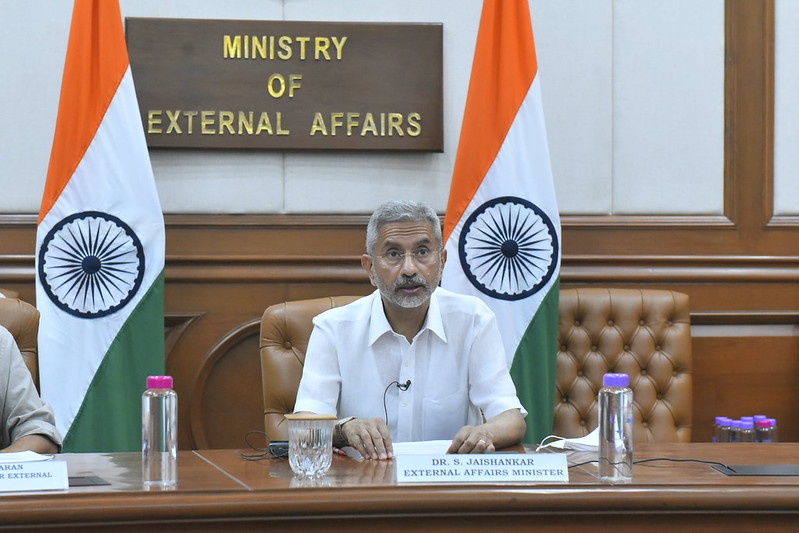Rising Brazil: The Choices Of A New Global Power
What should we expect from a newly powerful Brazil? Does the country have the capacity and leadership to be a central actor in addressing critical global and regional problems?
The following is part of Asia-LAC Dialogues, a series of interviews produced by the Inter-American Dialogue’s Asia and Latin America Program, featuring global perspectives on recent developments in the Asia-Latin America and the Caribbean dynamic.
Last month, External Affairs Minister S. Jaishankar made a trip to Guyana, Colombia, Panama, and the Dominican Republic. This visit marked the second time in less than twelve months, and third time in less than two years, that India’s Minister of External Affairs visited the Latin America and Caribbean (LAC) region. These trips, along with those made by other Indian government officials to the region, amount to a notable uptick in India’s engagement with the LAC region.
Traditionally, India’s engagement with LAC has been relatively limited, primarily driven by Indian companies, and focused on a select few growth-promoting sectors, such as pharmaceuticals and information technology. India has also primarily sought to engage bilaterally with LAC nations, focusing on Brazil, Argentina, and Mexico. However, the above-mentioned trips and Jaishankar’s rhetoric signal a potential shift in India’s engagement with and foreign policy toward the LAC region, as India and the LAC region attempt to capitalize on what Jaishankar termed “natural bonding.” If heightened engagement continues, and results in substantive agreements, there are many prospects for a more pronounced Indian presence in the LAC region, and maybe even a formal Indian policy on LAC.
For key insights on Jaishankar’s recent trip and what it signifies for the future of India-LAC relations and Indian foreign policy, we spoke with Hari Seshasayee, an advisor to the foreign minister of the Government of Panama and Asia-Latin America expert at the United Nations Development Programme (UNDP).
[caption id="attachment_135472" align="alignleft" width="300"] Hari Seshasayee is an Advisor to the Foreign Minister of the Government of Panama and an Asia-Latin America Expert for the United Nations Development Programme.[/caption]
Hari Seshasayee is an Advisor to the Foreign Minister of the Government of Panama and an Asia-Latin America Expert for the United Nations Development Programme.[/caption]
Inter-American Dialogue: What were the key developments during EAM Jaishankar's trip to the LAC region? What resulted from the bilateral talks?
Seshasayee: Jaishankar's trip to Guyana, Panama, Colombia and the Dominican Republic marks a historic visit—it is the first time an Indian foreign minister has visited any of these countries. That in itself is notable. The last time an Indian foreign minister made a bilateral visit to the region was two decades ago. We should not expect any immediate results or developments emanating from the trip. Although some agreements were signed, the impacts of this visit will be felt over the medium and long term. This is the beginning of a formal, high-level dialogue. After all, Jaishankar met with the foreign ministers of 16 countries during this trip, thanks to the India-SICA and India-CARICOM ministerial meetings held in Panama and Guyana respectively. He also met with the presidents of Panama, Guyana, and the Dominican Republic. These contacts will percolate into deeper engagements in the form of bilateral agreements, working groups, and more high-level visits. Notably, Jaishankar pointed out in his speeches at all four countries that the "real story" in India-Latin America ties is the economic one. This was on full display at the Latin America-India Business Forum held in Panama, where Jaishankar highlighted that the government's supportive role may act as a catalyst for economic ties.
Inter-American Dialogue: This April trip marks the second time that External Affairs Minister Jaishankar has visited the region in the last 12 months. Should these trips, along with other important signals from India, be interpreted as a new approach to engagement with LAC?
Seshasayee: Yes, this indeed signals a deeper engagement with the LAC region. This trip may well mark a before-and-after for India-Latin America ties. Jaishankar has now visited eight Latin American and Caribbean countries — his first was to Mexico in September 2021, then to Argentina, Brazil and Paraguay in August 2022, and the four countries now. In fact, Jaishankar has met with the president and head of state in seven of these eight countries (he did not meet with the president in Colombia). This shows the importance that is accorded to him personally and to India more broadly. The region understands the importance of the Indian economy as one of the major growth centers of the world. From the Indian point of view, New Delhi does have global ambitions, and these would not be fully met if India was politically absent in the Latin American region. Yet, we should not take these overtures to mean that Latin America will now be treated at par with India's other partners, such as the extended neighbourhood in Asia, be it South East Asia or West Asia (the Middle East). India's political attention will still remain more entrenched in Asia, and with its strategic partners such as the United States, Russia, Australia and Japan. What will change, however, is that Latin America will no longer be relegated to the far corners of Indian foreign policy.
Inter-American Dialogue: How will India's role in BRICS and its recent elevation to the G20 presidency shape its engagement with the LAC region?
Seshasayee: Given that India holds the rotating presidency of the G20, 2023 will be much more about the G20 than about BRICS. We should take a leaf out of Lula's comment that the G20 presidency is like the 'Diplomatic World Cup.' Right now, India is the host of the diplomatic world cup and is the cynosure of all eyes. Next year, it will be Brazil. BRICS will still be on New Delhi's radar, but just lower down in priority than the G20. There exists a real possibility that the BRICS may expand and open its doors to more members. If that happens, we may see another BRICS member from the Latin American region, perhaps Mexico, Argentina, or Uruguay (which is already a prospective member of the BRICS Bank, formally known as the New Development Bank), all of which have publicly expressed interest in joining BRICS. Until then, the three Latin American G20 countries, Mexico, Brazil, and Argentina, will remain a top priority for New Delhi, and under the direct purview of India's external affairs minister.
What should we expect from a newly powerful Brazil? Does the country have the capacity and leadership to be a central actor in addressing critical global and regional problems?
President Lula da Silva triumphantly announced that he and his Turkish counterpart had persuaded Iran to shift a major part of its uranium enrichment program overseas—an objective that had previously eluded the US and other world powers. Washington, however, was not applauding.
An upcoming meeting between Presidents Obama and Rousseff should not be expected to produce dramatic news or unexpected major breakthroughs.
 MEAphotogallery | CC BY-NC-ND 2.0
MEAphotogallery | CC BY-NC-ND 2.0